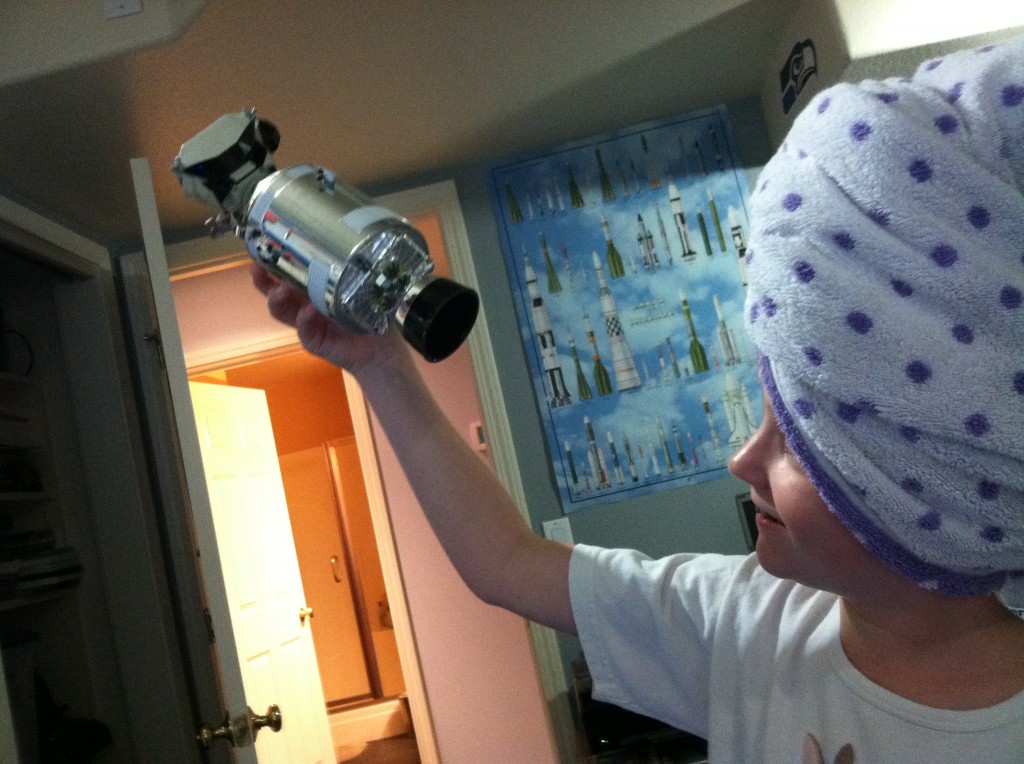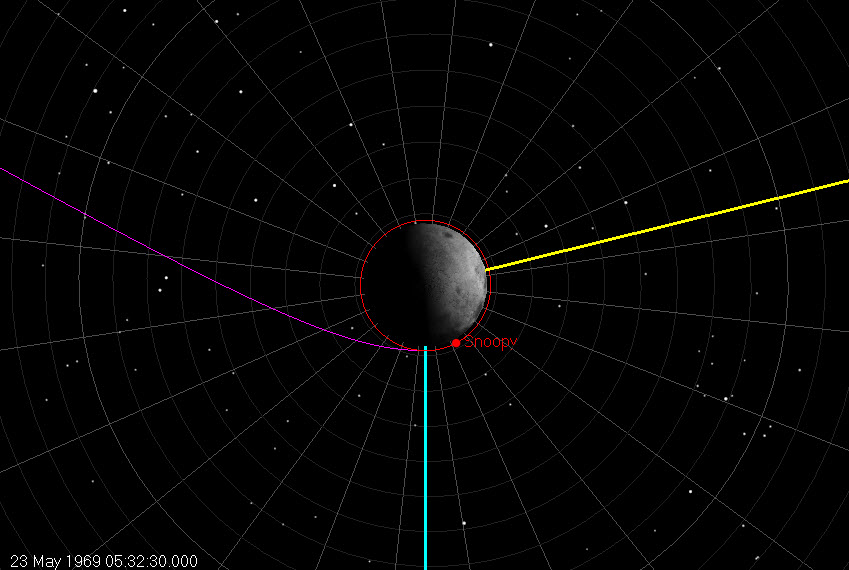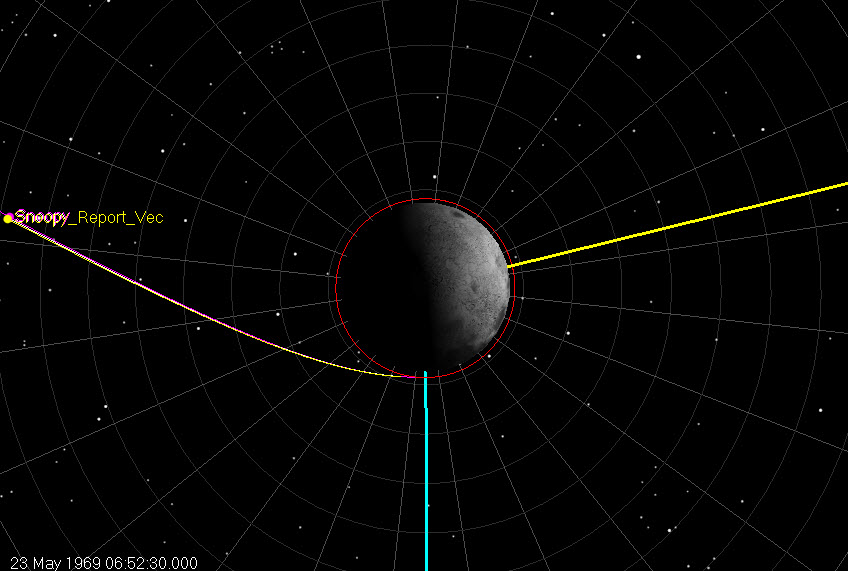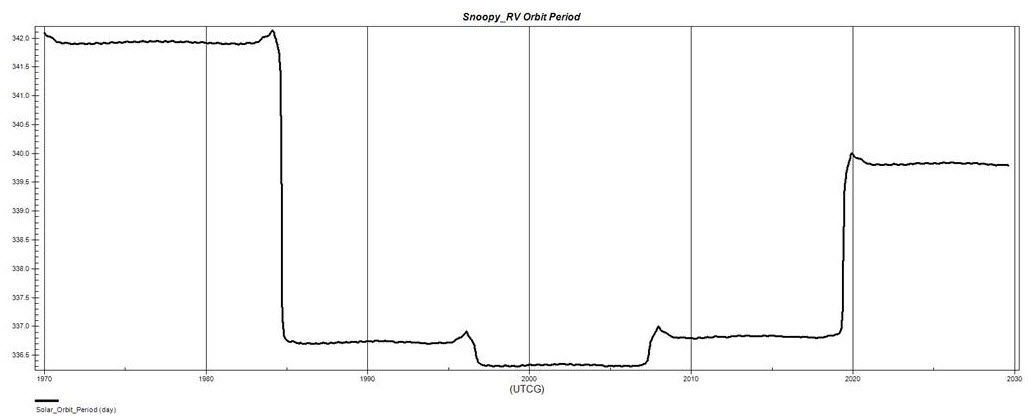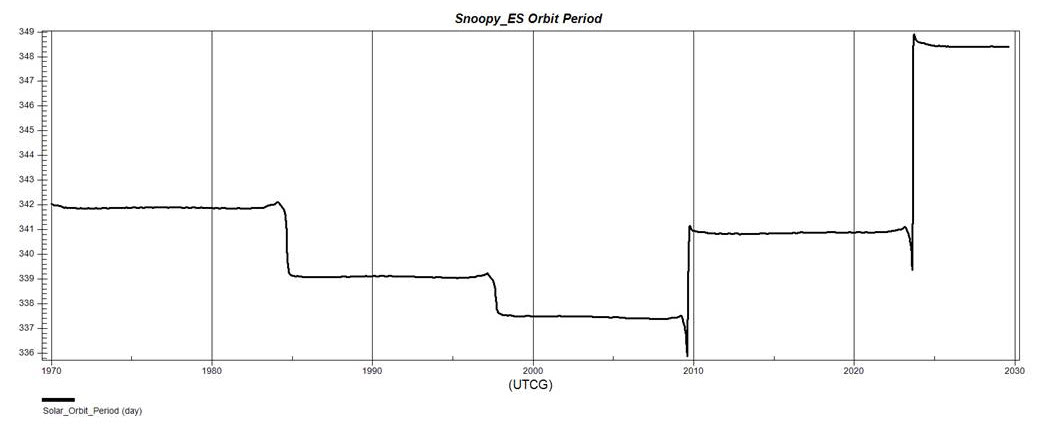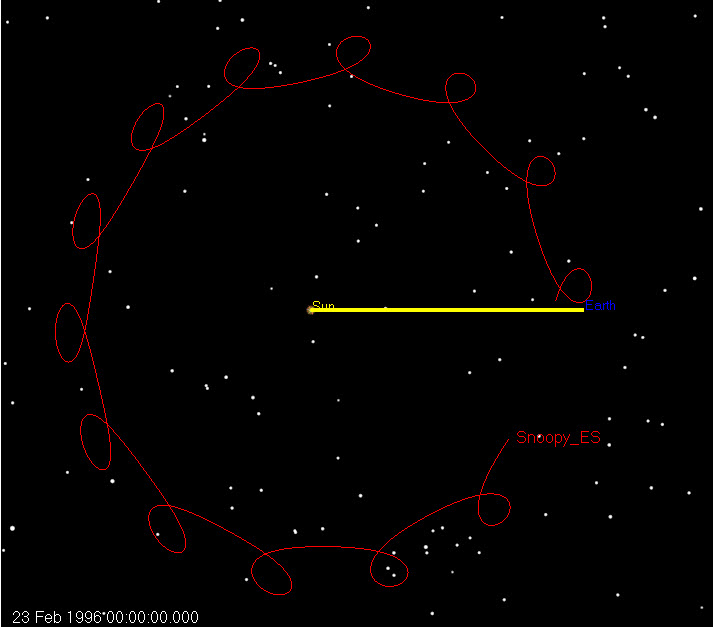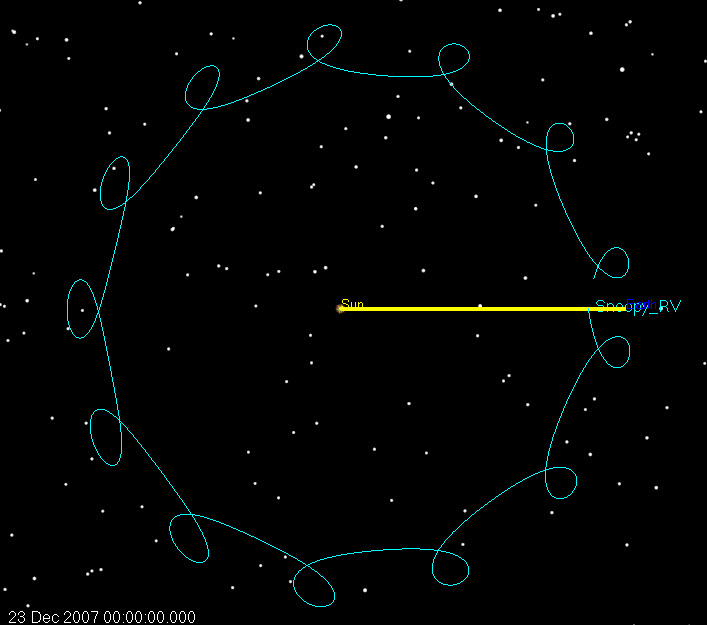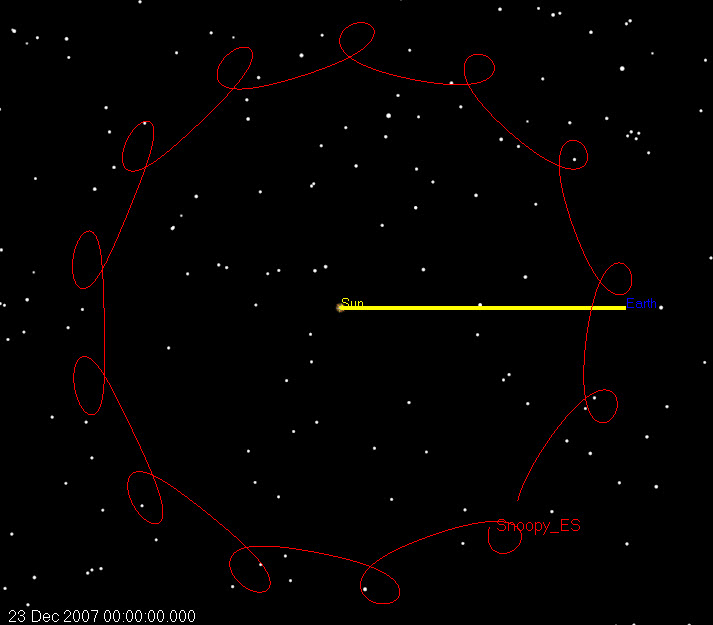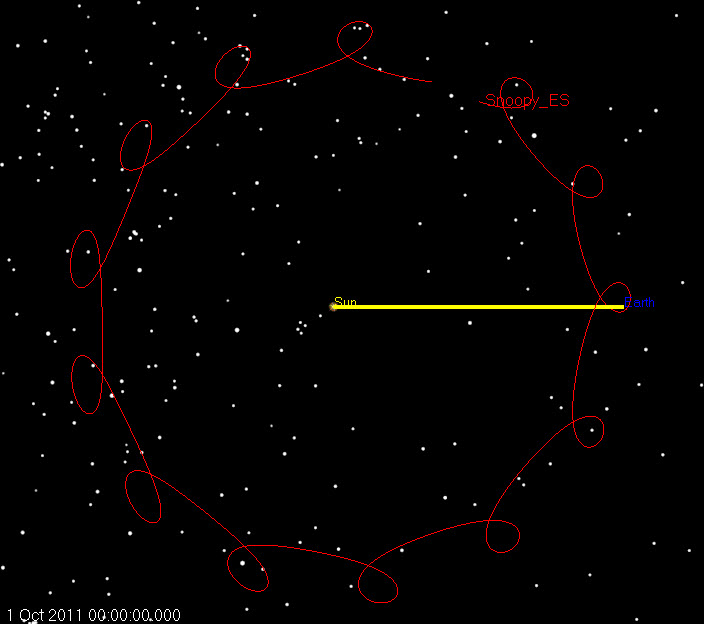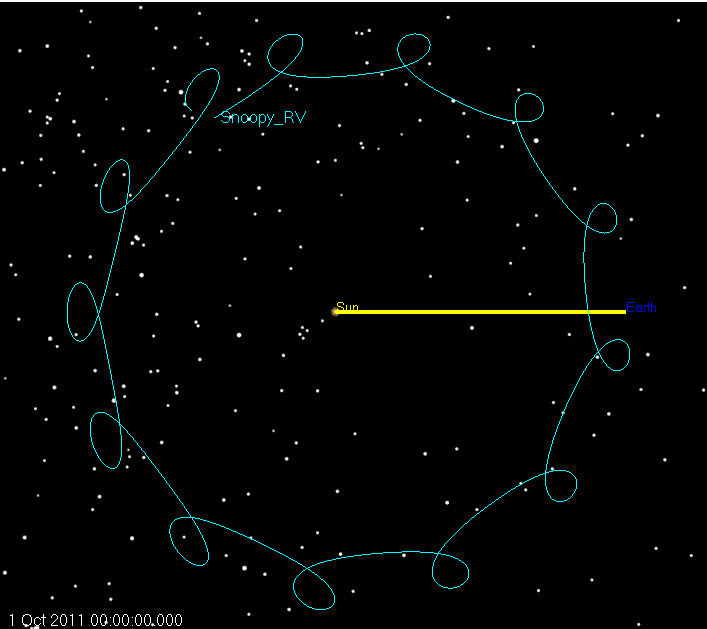
Discovery.Com
Universe Today
Skymania
CollectSpace
I am helping Nick Howes and his students in the UK (and elsewhere) to try and locate Snoopy, the ascent stage of the Apollo 10 Lunar Module that was sent into a solar orbit back in 1969.
Before I go on, Nick is with the Faulkes Telescope Project which is just about one of the coolest things I’ve ever ever been associated with. They have telescopes that students can remotely control over the internet, for free! As a kid that grew up in Seattle, I can appreciate the utility of that! On their “about” page they say:
———-
The Faulkes Telescope Project is an education partner of Las Cumbres Observatory Global Telescope Network (LCOGTN).
“Our aim is to provide free access to robotic telescopes and a fully supported education programme to encourage teachers and students to engage in research-based science education. Access to our resources and those of our partners is provided at no charge to teachers and students.
Robotic Telescopes
LCOGTN operates a network of research class robotic telescopes. Currently there are two telescopes, one in Hawaii and the other in Australia. These telescopes are available to teachers for them to use as part of their curricular or extra-curricular activities and are fully supported by a range of educational materials and a team of educators and professional astronomers.
———-
Take the liberty to google Nick and you’ll find pictures of him hanging out with Sir Patrick Moore!
If you don’t know Sir Patrick Moore, you may google him ( which I already did for you here)
[Next someone is going to show me a picture of Nick hanging out with Brian May, then I’ll be really jealous!]
Here’s my first communication with Nick describing the work I (and a few others) had done on this project. I figured I’d post it here, and in the future I’ll just post things here as the default. I cleaned it up a bit, but this was originally written as an email, so there’s a lot of “stream of consciousness” going on. Please excuse any lousy grammar you may encounter.
___________
I have some stories to tell with some preliminary data. I’ve got 3 different state vectors at this point that all pretty much agree.
I’m working with Chuck Deiterich and Emil Schiesser. I’ve also had several discussions (and will have several more) with my good friend John Carrico (Astrogator_John).
Chuck is an ex-JSC Apollo “Retro”. Emil worked for the Mission Planning And Development (MPAD) group, and was a deep space navigation expert.
I’ve known Chuck since I met him when I was working on the Apollo 13 trajectory. He is a great guy, and really enjoys working on this stuff with me. Once he referred to me as a “Freelance FIDO” which I considered to be the ultimate compliment.
I told Chuck about this project and he went to work trying to find data for me. He didn’t work as Retro for the entire Apollo 10 mission (he worked Apollo 11, 13 and most of the rest, plus Skylab, ASTP, Shuttle, etc..) but he was there for lunar operations hanging around in the control room (that’s where I would have been). He worked the launch of Apollo 10 (Retro’s were responsible for Aborts) but didn’t work the LM/CSM ops at the Moon. However, he was there when they separated the Ascent stage of Snoopy from the CSM Charlie Brown. Chuck says that prior to launch, his guys had suggested to the Astronauts that they ought to have a set of maneuvers and a procedures in place for the separation of Snoopy and Charlie Brown, i.e. a set of burns to back Charlie Brown away from Snoopy after separation. The Astronauts didn’t think they needed that, as they they (the pilots), were perfectly capable of backing the CSM away without any pre-planned maneuvers.
When they were going to fire off Snoopy, they pre-pointed it in the right direction with the CSM, and then separated. They commanded the burn from the ground, but did not command the attitude.
When they went to separate from Snoopy, the air pressure did not get cleared out of the tunnel between the CSM and LM (as it was supposed to), so when they detached the spacecraft the air pressure immediately pushed Snoopy away and right into the sun where the Astronauts couldn’t see it! Then they had to figure out how to back away from a vehicle they could not see. It was a dangerous situation that could have been avoided with proper planning. [Side note. My twitter friend @Blackprojects provided me with a transcript of the exchange between Houston and the command module Charlie Brown during separation. Those are here and here .]
So, while I was recreating the departure conditions and geometry for the mission, Chuck and I were talking about how we’d tell our vectors were right and what sort of basic geometry we’d expect to see. For one, Chuck figured the burn would take place between the Earth and the Moon, probably very close to the Earth-Moon line. Since the Lunar orbit was retrograde, this is the side that would be where Snoopy would be going in the same direction as the Moon moves around the Earth, and thus would be the best place to get an escape trajectory. You want to leave the Earth-Moon system as tangential to the Moon as possible (Hohmann transfer).
If you were looking out at the Moon from the Earth, the Sun ought to then be to the right, because that’s when they’d launch to get the lighting the way they wanted. They wanted to have the sun behind them when they landed, with good shadows, so the terminator was usually to the east of the Earth-Moon line.
So, when I started to get my vectors all set up, I figured I should be able to see that geometry.
I have 3 different ways of producing my outgoing Snoopy trajectory.
1. A spherical post-burn state vector from Emil.
2. A spherical post-burn state vector from the document @BlackProjects tweeted us.
3. A combination of a pre-burn state vector Emil gave me, with a delta-V vector added to it that Emil gave me.
When I was creating number 3, Chuck and I were talking about the whole “sun behind the LM” event, and it occurred to me that I ought to be able to recreate that in my software
( Satellite Tool Kit ).
Since I have a pre-burn orbit state of the LM minutes before the burn, all I need to do is propagate backwards to the time of separation, and take a look at what we’d see if the LM was pointing along the delta-v vector (which it would be, since the CSM had to pre-align Snoopy to that orientation) and we were looking down the docking port. That’s exactly where the CSM would have been.
So, I did that, and saw this:
Snoopy Release Video
———————————-
Chuck: “Hi Fred, I am sure that you spent many hours in the Apollo CMS and LMS. I know that these simulators had star fields including the sun and moon. Can you remember the brightness of the simulated sun as compared to the real sun? For example, would the real sun be blinding but not the simulated sun?”
Fred: “Chuck, Best I can recall the simulator was not as bright as the real sun nor a medical risk to look at it. ”
———————————
I thought that was pretty funny.
I had another exchange with Emil that was also pretty awesome. We were discussing coordinate frames, and I was trying to figure out what frame the data he sent me was in. He told me:
—————————-
Mike,
During Apollo 10 the CSM lunar orbit the inclination values relative to moon fixed equator varied between 178.8 and 179.2 deg. The incliniation didn’t change much but the ascending node did due to the gravitational field. The spread in the numbers also reflects state determination uncertainty. The solutions for the CSM ascending node relative to moon fixed system varied from 180 to 183 deg so the LM value should be near this, I would think .
…
The inertial system used during Apollo was mean equinox of the nearest Besselian year, except that near the end of the program the system was frozen to Besselian year 1972 so we could shut down the weaving facility that manufactured the rope memories.
Emil
——————————-
The weaving facility that manufactured the rope memories! Now that is some wild stuff!
Here is the geometry of the system at separation:
Here we are 1 hour later, and now I’m showing all 3 solutions
Let’s see where we would expect. Looking at the directions in Cis-lunar space we get this:
We leave the Earth with an orbit period of approximately 342 days. The way I figure, that gives us about a 14.7 year synodic period. So let’s look at the orbit for about 14 years and see where it went.
If we look at it in a Sun Inertial frame, we can see what’s going on:
What this does tell us, is that Snoopy started off close to the Earth, and then spent the next ~15 years not very close to the Earth at all, as it moved around the sun. This shows one complete synodic period, and you can see that the different Snoopy trajectories got back near the Earth-Sun line in 1984.
This isn’t a pure synodic period problem though, because the Earth’s gravity speeds up and slows down Snoopy. This isn’t 2-body motion, so if I plot out the 2 orbital periods over time, I get this:
By 1996 the we can see how far the 2 solutions have split apart. The Snoopy_RV (from the Report Vector) solution is near the Earth-Sun line, but the Snoopy_ES (from Emil Schiesser) solution is still far away.
Lets look at these orbits in an inertial view:
So where are we? I’ve got 3 different solutions (I only showed 2 here, because these both involve 50+ year trajectories which tasks my system a bit – holding all that ephemeris in memory).
Somehow I need to figure out what “spread” of solutions is appropriate, and then use that to bound where we look. I’m going to chat a bit with John and Chuck to see where to go. I have Monte Carlo tools at my disposal (we used them on IBEX and are using them again now on LADEE) and I’ll likely get those out and generate a spread of vectors around one of my current 3 and see where the spread goes 42 years later. By varying both the magnitude and pointing of the Moon escape maneuver back in 1969, we should be able to see what the possible spread is in space.
My preliminary take is that this is going to be very hard. If the 2 states we have here represent the spread, we are going to be looking for something that is both far away and receding.
I’ll let Nick and his folks solve that. They are the gurus in that part. They know how to find asteroids and comets and have the people-power (and the mojo: Sir Patrick Moore!)
In the mean time, I’ll get back to my team and our high-tech modelling techniques.
